
It’s always interesting to see how a traditional 3D game translates into a 2D experience, and the developers at Arzest have shown us just that in Hey! Pikmin for the Nintendo 3DS. Not only is this a 3D game turned 2.5D, Arzest were able to capture most of the original Pikmin‘s charm and wrap it up into a nice little package. Unfortunately, most of it doesn’t translate, as the game is heavily weighed down by it’s forced motion controls and boring puzzles.
Hey! Pikmin, much like its prequels, centers around Captain Olimar, a pint-sized astronaut determined to get to his destination in this puzzle-platformer. When things go terribly wrong aboard the S.S. Dolphin 2, Olimar and his ship go crashing down onto an unknown planet. Olimar’s ship informs him that the ship needs Sparklium to refuel, and he must explore the planet to collect as much Sparklium as possible to get the ship running again. Luckily, the planet is crawling with adorable yet familiar Pikmin that Olimar has grown accustomed to using, to help aid him in this adventure as well as assisting him against the vicious wildlife this unknown world offers.
"Aesthetics aside, however, the level layouts are as boring as they come."
Sadly, Arzest opted out of giving Hey! Pikmin that 3D effect. The reasoning behind this is that most of the game is played on the touch screen, and not the top screen — which is the only screen optimized of putting out a 3D appearance. With that being said, the first thing I noticed in the game are the eye-popping graphics. This is a 2.5D game in reality, but the moving atmosphere of the background — as well as the foreground — give the impression that Hey! Pikmin has more layers than it’s letting on. With flowery lands, construction complexes, caves and other different areas, there’s a lot of exploring to do in bite-sized pieces. Vivid flowers, grasses, and exotic plant life tower over Olimar as he makes his way through the opening area. You’ll take witness to some amazing backgrounds throughout the entire experience that have a level of realism, along with a touch of whim that really brings the levels to life. The construction area is packed with mechanical parts, doodads, pipes and machinery that emphasize the scale of Olimar compared to this world’s terrestrial inhabitants. All of the areas (or zone) of the game are well diverse and definitely stands on their own.
Aesthetics aside, however, the level layouts are as boring as they come. Olimar’s goal is to find as much Sparklium as he can within each stage and return it to the ship. A functioning capsule of the S.S. Dolphin 2 drops Olimar off at the beginning of each stage and picks him up to return him to the ship at the end. There is no set limit to how much Sparklium he must return with — and though I never did this, I’m assuming you can finish some levels without collecting any Sparklium at all. However, to beat the game, the ship informs you that you need 30,000 Sparklium to get back into orbit — so it’d be a good idea to collect as much of the fuel as possible in each stage. Though there are different paths to take within each level it feels very linear and extremely straight forward. Going through crevasses, climbing vines, and finding hidden holes in walls help sooth the monotony of each stage a little; but they all lead to one finite path to the finish. You’ll quickly realize that getting from beginning to end takes little to no effort.
"You, as Captain Olimar, have total control of each type of Pikmins’ actions and you can switch between types via touch screen — but they’re all basically good for the same thing: jumping high and attacking."
With that being said, each stage does at least have some level of difficulty, and some puzzles to work out before getting to the end other than just walking there; but it never gets too hard to handle, nor is dying really ever a concern. Each stage has its own obstacles to overcome. From destroying rocks, to building bridges, to crossing deadly terrain — and none of it is possible without a small legion of Pikmin at your side. Pikmin are the heartbeat of the entire experience. Their help determines how you go about each level and to what amount of Sparklium you leave with. There are several different types of Pikmin to help Olimar throughout his adventure as well: Red Pikmin are good in fire; Yellow Pikmin are good in electricity; Blue Pikmin are good in water and Rock Pikmin are good against breaking heavy objects such as crystals.
You, as Captain Olimar, have total control of each type of Pikmins’ actions and you can switch between types via touch screen — but they’re all basically good for the same thing: jumping high and attacking. By aiming and clicking on the touch screen — the only utilized screen — you control where Pikmin can jump off to. Each Pikmin has a different level of jumping height, and getting them to do even the most trivial of tasks is a bit off-putting. There are a set number of items within each stage (usually three) that you have the choice to collect (or not). These items can range anywhere from being a pair of clippers to a mobile phone, and upon collecting these items they can fetch hundreds of Sparklium — much more than the Sparklium bits scattered throughout the level that yield only a few each. Some of these hidden items are harder to get than others and some require a bit of thinking before you can acquire the wealth of Sparklium they hold. This is where some of the trouble with controlling the Pikmin comes in. Pikmin follow Olimar around wherever he goes. The only way to get them to stop following you is to throw them into a plant they can continually bounce on, leave them behind in another room, or hover using your jet pack. When you aim the Pikmin for throwing on the touch screen, upon landing they will feverishly try and return to Olimar’s side where they’re safest.
There’s often a balancing act between throwing Pikmin onto specific platforms and getting Olimar to said platforms before they have time to recover from the jump and return to wherever Olimar was intially standing. If you’re lucky enough to make it to the platform before the Pikmin try to get to where you were originally standing, then you’ve succeeded in transporting them from one platform to the other. These puzzles are often more frustrating than they are fun. Of course, If you mess up, or if some Pikmin go running away, you can always call them back by Olimar’s Pikmin-calling whistle.
"The controls withing Hey! Pikmin are ridiculously frustrating."
Besides collecting items containing Sparklium and Sparklium pieces scattered throughout each level, Pikmin can also attack your enemies. Enemies are usually as cute as the little Pikmin themselves and are quite diverse in appearance. From big-eyed fish to chubby birds that sound like chickens, there are so many diverse species within Hey! Pikmin that it really makes the game always appear interesting. Most of the enemies within the game are one-hit kills and often drop a tiny amount of Sparklium. There are a few other enemies that require a lot more hits, but most of the time the challenge of any given enemy is not in any way exceptionally hard. Just don’t forget to throw the Pikmin at the enemies. If Pikmin are standing next to an enemy, they will not automatically attack on their own until you throw them. So Pikmin getting killed will happen a lot.
The controls withing Hey! Pikmin are ridiculously frustrating. The Nintendo 3DS may not have every button of a standard console controller, but what buttons it does have are never put to proper use. The circle pad, face buttons, and D-pad controls Olimar’s direction. That’s right, you can have Olimar go up by moving the circle pad up, or pressing up the top face button (X), or the top D-pad button — and that goes for every other direction and respective button. L and R both toggle the onscreen map. That leaves the touch screen to do most of the work, and let me tell you it is no fun.
Olimar’s whistle is a tiny little button on the bottom right of the touch screen; and right next to that is another tiny little button that controls Olimar’s jet pack. I often found myself in dangerous areas such as entering water with red Pikmin (which is a no-no!). But before I blow my whistle and call my Pikmin back, it was too late and all of my fire Pikmin disintegrated instantly. Or calling Pikmin from around a corner can take a few taps, or a concentrated precision tap. Furthermore, when I had to get to higher places and cross over open terrain — which required using the jet pack — I had to jostle the 3DS in my left hand while trying to click with my right. At that time I controlled Olimar with the circle pad, often moving it slightly down from either left or right. That forced Olimar’s jet pack to cancel out causing me to fall down a path I had to work my way back out of. I often found myself controlling Olimar comfortably with the circle pad, until I used the jet pack; then I had to change to the D-pad for more precise controls.
"Overall, Hey! Pikmin is a pleasant adventure though never once ground breaking."
The frustration of holding the 3DS in one hand while freeing my other hand to use the styli to control my other actions was completely unnecessary, especially since there are so many free buttons on the 3DS that could have and should have been utilized. After collecting a goal amount of Sparklium, the ship will upgrade you with new perks such as longer thrust time with the jet pack. But nothing that really makes the game that much more fun. You may get more thrust out of your jet pack, but it doesn’t allow you to go higher, just farther left or right.
After each stage, if you’ve finished with any amount of Pikmin they will go into what’s called Pikmin Park. This park is separated into different zones. This section allows the Pikmin you’ve collected to scurry through the park, rustling through grass, fire, electricity and more, to find any loose Sparklium that may be lost within the park. Since this is all automated, the Pikmin continue to search the park grounds on their own even as you adventure into new stages. However, the whole concept is overly useless. You can travel through an entire stage and upon returning to Pikmin Park find that they’ve only managed to find 10 Sparklium. It’s not always that bad, but most of the time it is. If the ship only asked for 500 total Sparklium to help it refuel, that small amount unearthed from Pikmin Park would make sense. But when the goal is 30,000 Sparklium, 10 is just a drop in the bucket.
Overall, Hey! Pikmin is a pleasant adventure though never once ground breaking. Its beautiful graphical style is unique and possibly more beautiful since it’s on a handheld system. But without the horrible controls, not-so-fun puzzles, a useless automated Sparklium collection gimmick, and much more, this game could have been so much better.
This game was reviewed on the Nintendo 3DS.
Graphics are eye-popping and beautiful, the game feels bigger than it really is, and the Pikmin are as adorable as ever.
Jostling the 3DS within your hands never gets easy or comfortable, stage design is boring, there's never a real challenge.









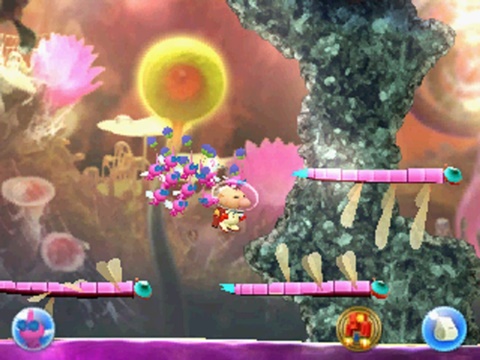
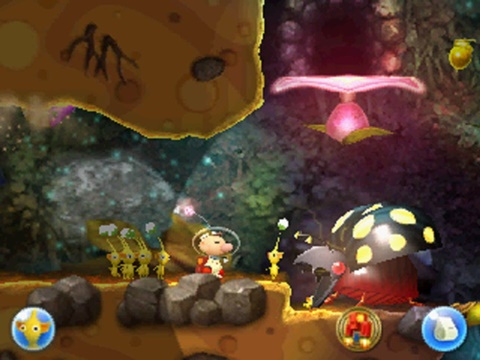
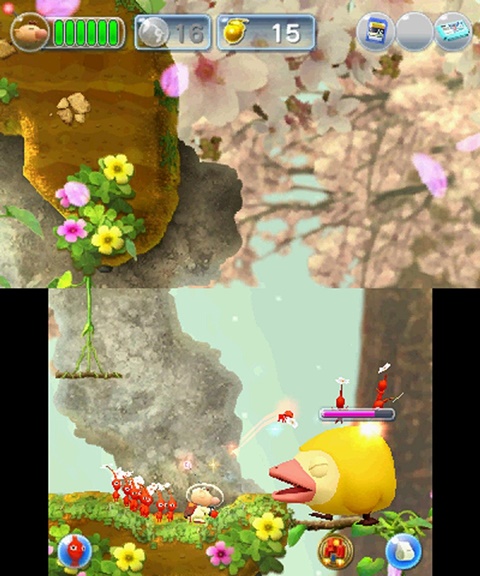
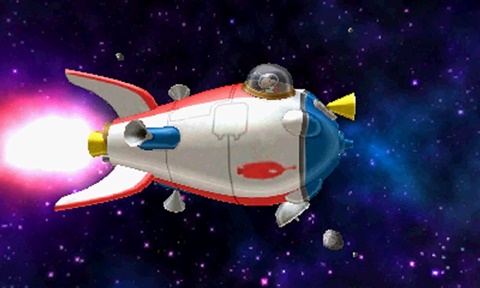

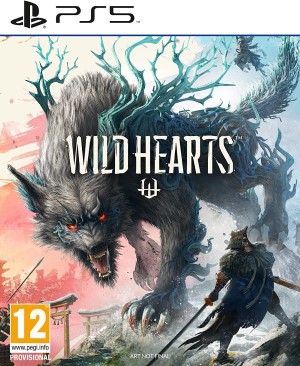


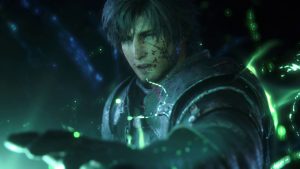
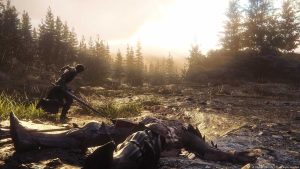

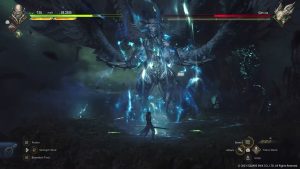


Share Your Thoughts Below (Always follow our comments policy!)